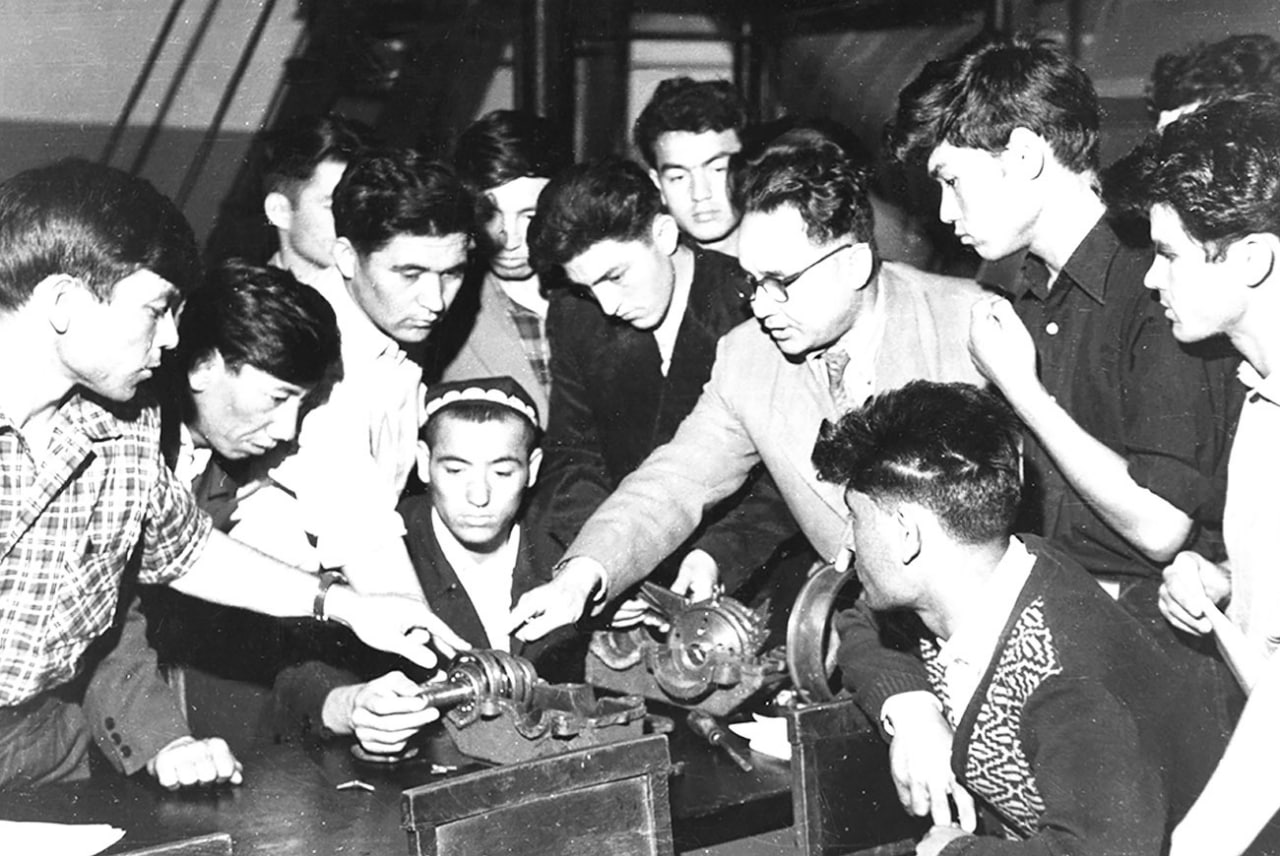Tashkent Institute of Textile and Light Industry: A 90-Year Legacy
The Tashkent Institute of Textile and Light Industry (TITLI) has been a leader and foundational institution in Central Asia for 90 years. Throughout its history, the institute has not only trained highly qualified and skilled specialists for crucial sectors of Uzbekistan's economy—such as cotton ginning, textile, and light industries—but has also contributed significantly to these industries by offering insights, recommendations, and innovations in production organization, planning, management, product quality improvement, labor productivity, technological advancements, and equipment modernization.
Origins of TITLI
The institute's roots trace back to the early 1920s, when Uzbekistan was home to several major industrial enterprises, including the Fergana Textile Factory, Bukhara and Samarkand Woolen Factories, Margilan Silk Factory, and the "Atlas" Production Association. The establishment of these factories, alongside the growing demand for skilled personnel to support the Tashkent Textile Combine and various sewing factories in cities like Bukhara, Samarkand, Kokand, Urgench, and Andijan, highlighted the necessity of founding a specialized educational institution. This demand laid the groundwork for the creation of TITLI.
Before its establishment, these enterprises were partially staffed by graduates from the National University of Uzbekistan’s Department of Preliminary Cotton Processing (established in 1927), which later became the Central Asian Cotton-Irrigation Polytechnic Institute in 1929. However, the growing needs of the textile and light industry sectors called for the foundation of a dedicated institute.
Early Years and Development
In September 1932, TITLI officially commenced its activities, initially offering two faculties: "Preliminary Cotton Processing" and "Mechanical Technology," with four specializations: cotton processing, weaving, spinning, and silk technology. In the 1932-1933 academic year, the institute welcomed its first cohort of 125 students, with Amin Rahmatullayev, a prominent figure in public education, serving as its first rector.
By 1935, the institute had constructed its four-story educational-laboratory building (now known as the 2nd Educational Building) and a dormitory for students. The institute continued to grow, and in 1940, it merged with the Tashkent Academy of Industry, significantly expanding its resources, facilities, and staff.
During the 1940s and 1950s, TITLI emerged as a prominent training center for textile specialists not only in Uzbekistan but also across Central Asia, including Kazakhstan, Kyrgyzstan, Tajikistan, and Turkmenistan, as well as Azerbaijan, Moldova, and countries in Asia, Africa, and Latin America. The institute's reputation grew, and by 1962, the student population had surged to 4,000, while the number of professors and instructors had reached 200. It was also during this period that "Light Industry" was added to the institute's name, reflecting the growing number of new specializations.
Expansion and Innovation
Over the decades, TITLI underwent several expansions, with new faculties and departments established to meet the evolving needs of the textile and light industries. For instance, the Faculty of "Engineering Economics" opened in 1955, followed by the "Evening Faculty" in 1958, the "Light Industrial Technology" faculty in 1966, and the "Chemical Technology" faculty in 1967.
By the 1980s, TITLI had become a major educational institution, training highly qualified engineers and technologists. The institute's facilities also expanded, with new buildings constructed, including a 6-story educational building in 1973 (the current 1st Educational Building), and the "Cotton Preprocessing" faculty building. The student body continued to grow, reaching 10,897 students by 1990.
Global Reach and Independence Era
With Uzbekistan's declaration of independence in 1991, TITLI entered a new phase of development. In the following 30 years, the institute underwent significant reforms to align its educational process with modern standards, including the introduction of bachelor's and master's programs. The institute has also made strides in enhancing its educational resources, equipping laboratories with modern technology, and fostering a national spirit in its educational work.
TITLI’s international partnerships have also flourished. Today, the institute is a member of prestigious international organizations such as the Textile Academy, the Association of Printing Educational Institutions, and the Silk Association. It has established collaborations with over 20 foreign institutions, including universities in Germany, Belgium, Russia, and Greece. Over 400 students and faculty members have participated in international exchange programs in countries like the USA, South Korea, and India.
In the scientific realm, TITLI has also contributed to major innovations. Noteworthy achievements include the creation of electrically conductive fibers, new dyeing techniques for natural silk, and advanced methods for preserving cotton fiber quality. TITLI faculty members have published numerous scientific papers and received patents for their research, cementing the institute's role as a leader in textile innovation.
Modern TITLI
Today, TITLI consists of four main faculties—"Cotton Industry Technology," "Textile Industry Technology," "Light Industry Technology and Design," and "Printing Technologies"—with 22 departments offering a wide range of bachelor's and master's programs. The institute continues to prioritize the integration of modern technology and industry trends in its curriculum, preparing graduates to meet the demands of a globalized economy.
The institute's mission remains steadfast: to cultivate morally sound, highly qualified professionals who contribute to the development of Uzbekistan’s textile and light industries. Through its commitment to innovation, international collaboration, and educational excellence, TITLI is poised to remain a leader in Central Asia’s textile education for many years to come.



















